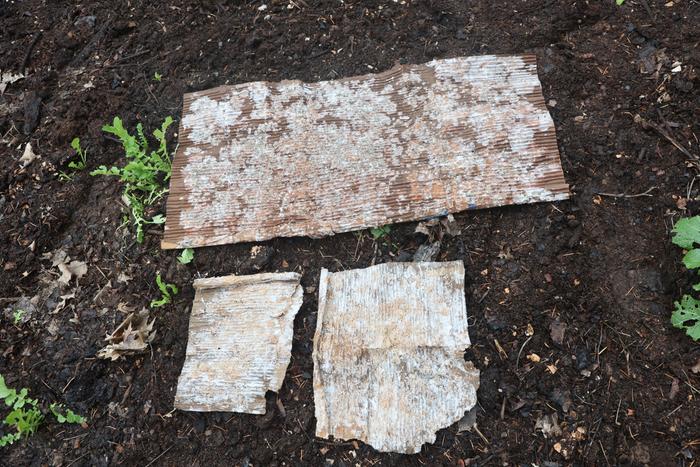During one of the workshops at the recent Radical Mycology Convergence we got some king Stropharia (Stropharia rugosoannulata) spawn to take home to our gardens. We broke apart a bag of sawdust spawn and spread the crumbles over cardboard to multiply the amount of mycelium. The cardboard had been soaked and then we removed one side of the cardboard to reveal the corrugations. After sprinkling with spawn we rolled the pieces of cardboard into burritos an put them in plastic bags to keep moist. Depending on temperature, a week or two later the cardboard is ready to go into the garden bed. King Stropharia is supposed to be a great companion for corn, so i put mine where i'll be planting corn next year. Of course, fungi doesn't like it when you till the soil, so keep that in mind when you choose a location. I'm not tilling my soil, so it's pretty easy. I had recently spread
compost in the garden bed, and the spawn does best with soil/compost contact. I covered the myceliated cardboard with wood chips. Soon i will add a layer of leaves. We don't use paper or cardboard in our gardens at Wheaton Labs, so i will be removing the cardboard after the mycelium grows and gets settled into the wood chips.
I love to see these healthy mycelial threads as they leave the sawdust and grow over the cardboard.
Hopefully next year along with my corn i'll be harvesting some tasty king Stropharia mushrooms from the garden.

 8
8





 6
6





 8
8





 7
7





 5
5





 6
6









 6
6





 7
7





 5
5





 8
8













